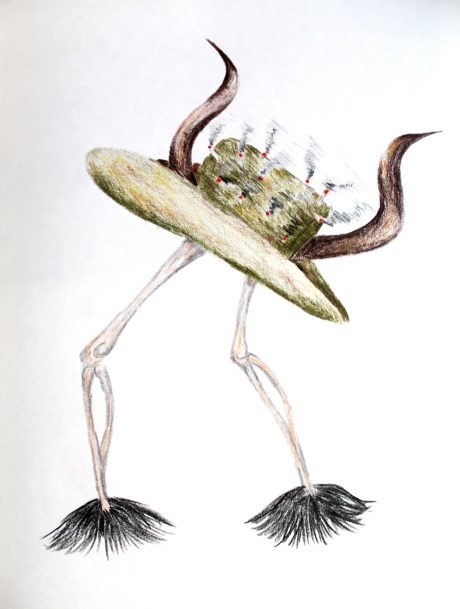Andrés Pereira Paz
Radio Carabuco
23 May - 16 Jun 2019
ANDRÉS PEREIRA PAZ
Radio Carabuco
23 May – 16 June 2019
Radio Carabuco at Künstlerhaus Bethanien has evolved from the podcast station of the same name created by Bolivian artist Andrés Pereira Paz. The starting point is the artist’s critical reflections on a vision of hell produced by the painter José López de los Ríos, created in 1664 in the town of Carabuco in Bolivia. This painting, commissioned by the Catholic church, can still be seen in Carabuco’s church on the shores of Lake Titicaca in La Paz. As European engravings were widely known during the colonial period, these sincretic depictions of ”Glory”, ”Purgatory” and ”Hell” may correspond in part to engravings made by French artist Philippe Thomassin during the early 17th century, highlighting the interchange of images at that time. As in many other paintings of the period, the Christian motif was reproduced by the Spanish colonial power for the purpose of ‘pagan conversion’ and as propaganda to hammer home Catholicism’s message of salvation as intended for transfer to Latin America. Against this background, Pereira Paz will present a series of podcasts exploring the forms and effects of religious and cultural colonization and investigating various political and social perspectives, particularly with regard to his native Bolivia. The focus will be on the demonization and suppression of the ‘Other’. Thinking of the exhibition space as a setting for listening, Pereira Paz has collaborated with international artists, social scientists, performers and activists (Gabriel Acevedo Velarde, Ana Alenso, David Aruquipa Perez, Stanisław Czaplicki, Elia Nurvista, Liv Schulman) to produce specially commissioned audio pieces and podcasts on various subjects, such as the emerging European far right, LGBT performances in Bolivian folklore, the presence of evangelical Christians in South America, and extractivism, etc.
The audio installation at Künstlerhaus Bethanien is supplemented by a selection of images from the ‘’David Aruquipa Perez and Comunidad Diversidad’’ archive as well as an object-based installation created by the artist.
Radio Carabuco
23 May – 16 June 2019
Radio Carabuco at Künstlerhaus Bethanien has evolved from the podcast station of the same name created by Bolivian artist Andrés Pereira Paz. The starting point is the artist’s critical reflections on a vision of hell produced by the painter José López de los Ríos, created in 1664 in the town of Carabuco in Bolivia. This painting, commissioned by the Catholic church, can still be seen in Carabuco’s church on the shores of Lake Titicaca in La Paz. As European engravings were widely known during the colonial period, these sincretic depictions of ”Glory”, ”Purgatory” and ”Hell” may correspond in part to engravings made by French artist Philippe Thomassin during the early 17th century, highlighting the interchange of images at that time. As in many other paintings of the period, the Christian motif was reproduced by the Spanish colonial power for the purpose of ‘pagan conversion’ and as propaganda to hammer home Catholicism’s message of salvation as intended for transfer to Latin America. Against this background, Pereira Paz will present a series of podcasts exploring the forms and effects of religious and cultural colonization and investigating various political and social perspectives, particularly with regard to his native Bolivia. The focus will be on the demonization and suppression of the ‘Other’. Thinking of the exhibition space as a setting for listening, Pereira Paz has collaborated with international artists, social scientists, performers and activists (Gabriel Acevedo Velarde, Ana Alenso, David Aruquipa Perez, Stanisław Czaplicki, Elia Nurvista, Liv Schulman) to produce specially commissioned audio pieces and podcasts on various subjects, such as the emerging European far right, LGBT performances in Bolivian folklore, the presence of evangelical Christians in South America, and extractivism, etc.
The audio installation at Künstlerhaus Bethanien is supplemented by a selection of images from the ‘’David Aruquipa Perez and Comunidad Diversidad’’ archive as well as an object-based installation created by the artist.

